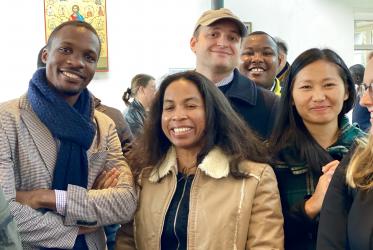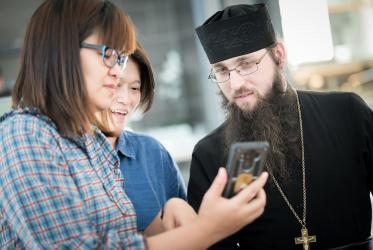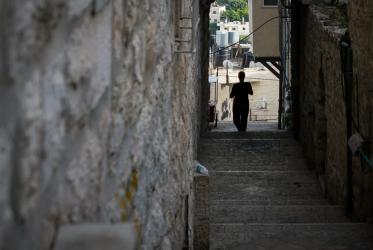It has taken me a while to get enthusiastic about Interfaith Harmony Week each February. That is partly because in my own country, the United Kingdom, there has been quite a longstanding practice, certainly going back more than 20 years, of marking the need for peace between religions in the second half of October – as part of the traditional time of reflection on World Peace. The later development of this week in February as Interfaith Harmony Week, ratified by the United Nations felt as though it was ignorant of the good practice that was already common, in Britain and in some other countries. However I have gradually ‘warmed’ to the idea, and one thing that I like is that it falls shortly after the Week of Prayer for Christian Unity (at least in the northern hemisphere). The implicit connection this draws between the need for unity and harmony between Christians, and as a starting point for harmony between religions feels a helpful link.
This year, we in the interreligious dialogue office at the WCC have certainly been marking Interfaith Harmony Week in a variety of interesting ways. Last Monday (1 February) while my colleague Peniel Rajkumar was leading worship in the Ecumenical Centre chapel in Geneva – with some very creative thoughts about peace and reconciliation, drawing on the biblical account of the reconciliation between Jacob and Esau (Genesis 33) – I myself was in New York at the UN building speaking at a symposium on religion and violence, in which of course questions of interfaith harmony, or the lack of it, were a key concern.
On returning to Geneva, Peniel and I had the pleasure of hosting here our colleagues from the Vatican’s Pontifical Council for Interreligious Dialogue (PCID), with whom we hold an annual staff meeting. There is much of interest to share in our various work, and increasing opportunities for collaboration. Interfaith Harmony Week is an appropriate time to be holding this meeting, though it was probably by accident rather than design. Over the last year the WCC has developed and published a short practical guide which explores the differences and similarities between ecumenical dialogue and interreligious dialogue. There had been Roman Catholic representation (from the PCID) on the working group which prepared it. It is called Called to Dialogue: Interreligious and Intra-Christian Dialogue in Ecumenical Conversation and is available in an electronic version here.
Near the end of the guide the following comment is offered:
A few years ago Peter Colwell, Deputy General Secretary of Churches Together in Britain and Ireland, during one Week of Prayer for Christian Unity raised the question as to whether the primary task for today was to work and pray for Christian unity or rather for peaceful co-existence between Christians, Muslims, Hindus, Sikhs, and others. He then continued by recalling Archbishop Desmond Tutu’s comment that “Apartheid is too strong for a divided church” and noted how the general secretary of the World Council of Churches, Dr Olav Fykse Tveit, had recently added, “The needs of the world for reconciliation with God, with one another, and with nature are too big for a divided church.” So it was good that our meeting with the PCID during Interfaith Harmony Week offered a lived example of ecumenical and intra'Christian cooperation to work together for wider interreligious harmony.




